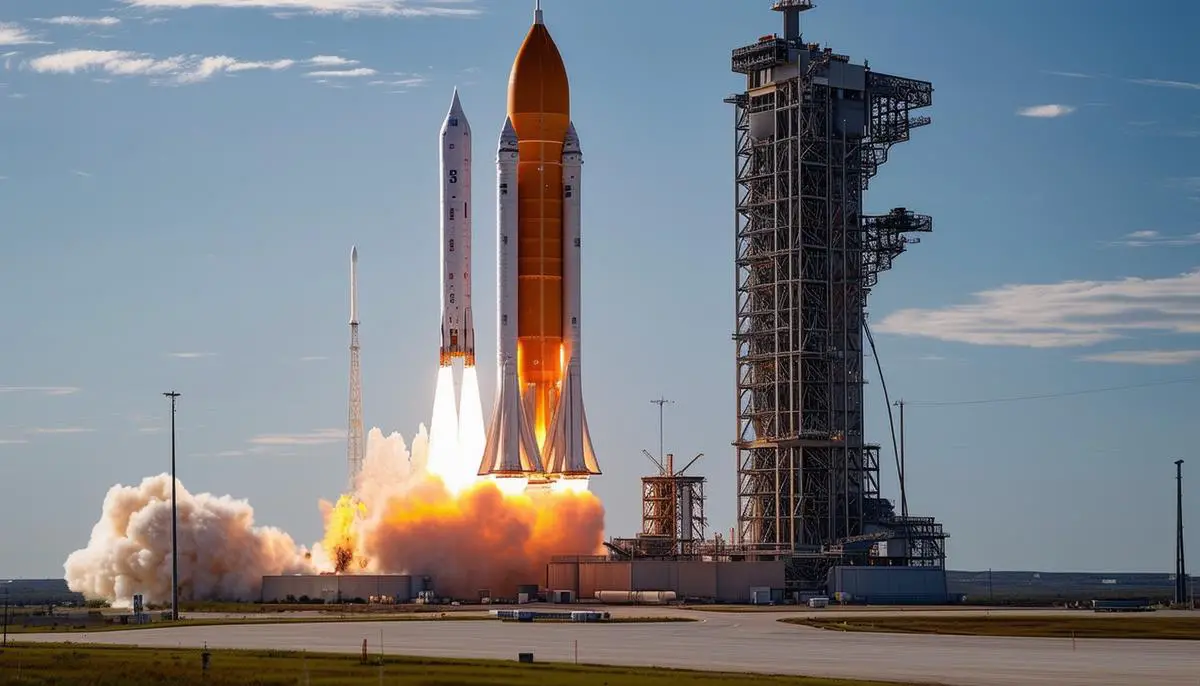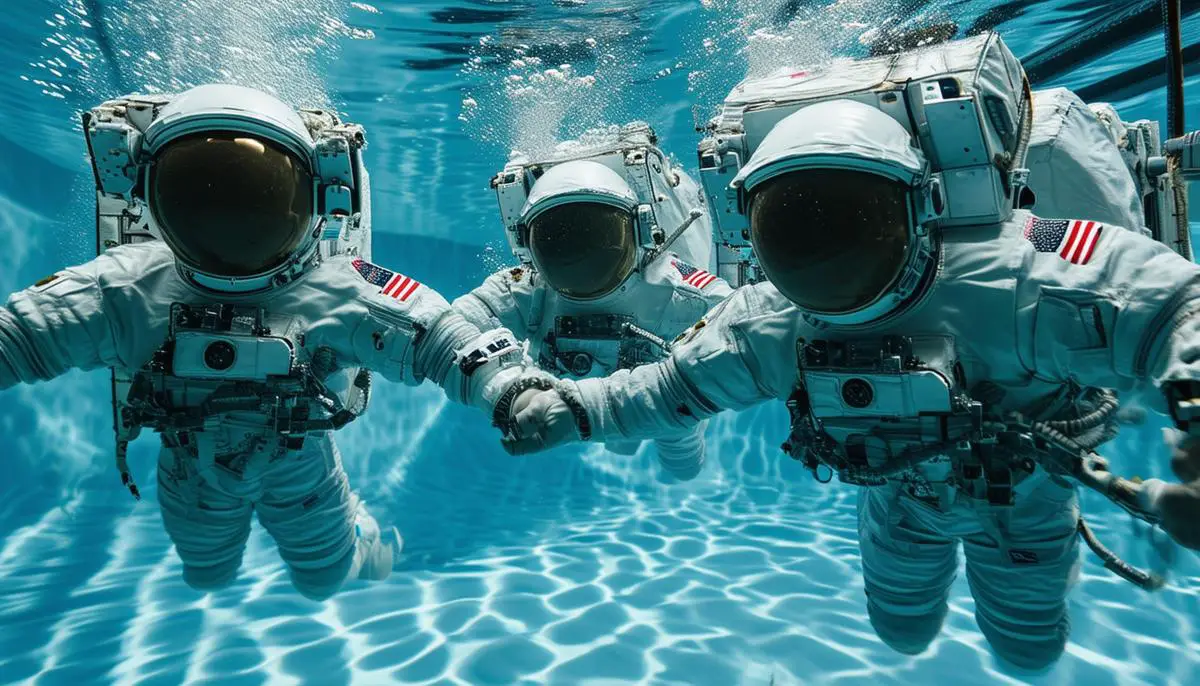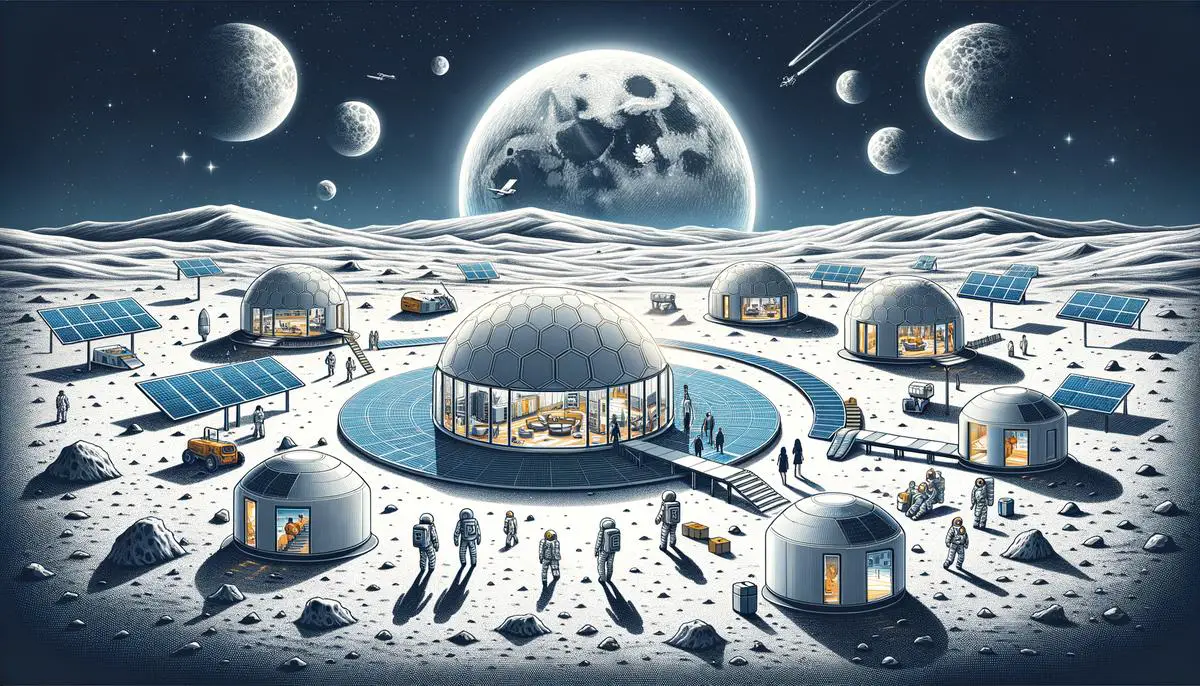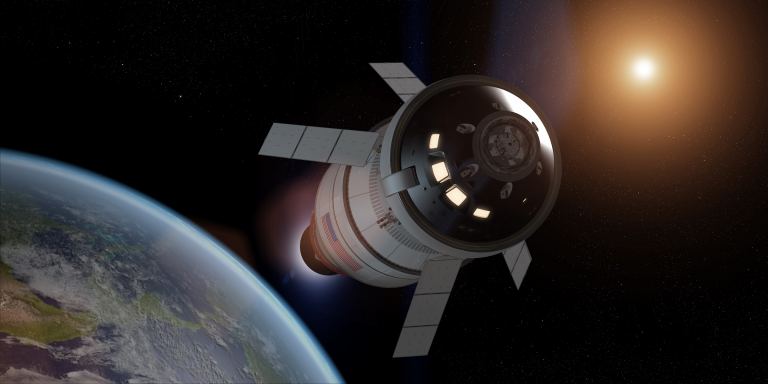Contents
Mission Overview
NASA's Artemis II mission represents a pivotal step in the return of humans to the moon, laying groundwork for lunar exploration and potential voyages beyond. As the first crewed mission utilizing both the Space Launch System (SLS) rocket and the Orion spacecraft, Artemis II aims to demonstrate key technologies, validate spacecraft systems in deep space, and assess human performance and health outcomes from the lunar journey.
The astronaut crew comprises Reid Wiseman, Victor Glover, Christina Koch, and Jeremy Hansen, a blend of tested space veterans and heralded pioneers.
- Commander Reid Wiseman will channel his previous spacewalking and command experience into orchestrating mission protocols and ensuring compatibility of operations between diverse international systems aboard.
- Pilot Victor Glover will bring his expertise from the SpaceX Crew-1 mission. His insights from spacewalks and test piloting experience will inform the operation and maneuvering of Orion during its circumlunar trajectory, executing complex flight maneuvers and responding to in-flight anomalies.
- Mission Specialist Christina Koch holds the record for the longest spaceflight by a woman. Her prior engagements on the ISS and conducting landmark all-female spacewalks will be vital in handling challenges and conducting experiments aimed at understanding deep-space living environments.
- Jeremy Hansen, the first Canadian predicted to orbit the moon, rounds out the crew, contributing knowledge as a fighter pilot and participant in international astronaut training programs. His expertise will guide Orion through lunar orbit and test new technologies for deep space exploration.
The crew will orbit the moon and conduct evaluations on the Orion spacecraft, monitoring life support systems, validating navigation and propulsion for lunar orbits, and executing a safe re-entry and splashdown. This mission paves the way for Artemis III, which anticipates human landing on the lunar surface.
Artemis II seeks to bridge past accomplishments with future aspirations, turning lessons from Apollo missions into stepping stones towards sustained lunar exploration. It reaffirms humanity's resolve to venture beyond Earth, reinforcing international cooperation and technological innovation in space exploration.
Astronaut Profiles
Reid Wiseman, the commander of Artemis II, graduated from Rensselaer Polytechnic Institute with a Bachelor of Science in Computer and Systems Engineering and earned a Master of Science in Systems Engineering from Johns Hopkins University. A Naval Aviator since 1999, Wiseman has accrued experience with deployments in Operations Southern Watch, Enduring Freedom, and Iraqi Freedom. Following training at the U.S. Naval Test Pilot School in 2004, he was selected by NASA in 2009. His spaceflight résumé includes a mission aboard the ISS during Expedition 40/41 in 2014, where he performed spacewalks and scientific experiments. His role as Chief of the Astronaut Office has prepared him for the leadership position on Artemis II.
Victor Glover, the pilot, has an engineering and aeronautics background. He earned a Bachelor of Science in General Engineering from California Polytechnic State University, a Master of Science in Flight Test Engineering from Air University, another in Systems Engineering from the Naval Postgraduate School, and one in Military Operational Art and Science from Air University. Glover's military career includes serving with the U.S. Navy, reaching the rank of commander and contributing to Operation Iraqi Freedom. His spaceflight experience includes the SpaceX Crew-1 mission to the ISS, where he took part in spacewalks.
Christina Koch brings a resolute spirit and the record for the longest single spaceflight by a woman. She earned Bachelor of Science degrees in Physics and Electrical Engineering and a Master of Science in Electrical Engineering from North Carolina State University. Before her selection as a NASA astronaut in 2013, Koch worked with the United States Antarctic Program and the National Oceanic and Atmospheric Administration. Her space credits include her stay on the ISS, setting spaceflight records and participating in the first all-female spacewalk.
Jeremy Hansen, the mission specialist, will be the first Canadian to circumnavigate the moon. Educated at the Royal Military College of Canada, he earned a Bachelor of Science in Space Science and a Master of Science in Physics. His military service with the Royal Canadian Air Force as a CF-18 fighter pilot and participation in defense and security operations prepared him for astronaut training. Chosen by the Canadian Space Agency in 2009, Hansen's experiences include NEEMO 19, where he lived undersea to simulate long-duration spaceflight.

Historical Significance
Artemis II stands as a monumental leap in space exploration and human achievement. Breaking past constraints of previous missions, this project marks several milestones.
Artemis II's flight signifies historical firsts.
- Rebecca Wiseman's leadership embodies the evolution of space command, streamlined by international cooperation and technological progress.
- Victor Glover will make history as the first person of color to orbit the Moon, encapsulating a leap for inclusiveness.
- Christina Koch will ascend as the first woman to orbit the Moon, shattering celestial glass ceilings and serving as a role model for aspiring female scientists and astronauts.
- The inclusion of Jeremy Hansen marks a milestone as the first Canadian set to venture beyond Earth orbit, accentuating the collaborative nature of modern space exploration that transcends borders.
Their journey around the moon is a beacon signaling the expansion into deep space life, key for future isolated habitats on other planets and moons. It validates modern technology and testifies to our relentless pursuit of knowledge and capability. The spacecraft and systems tested during Artemis II may one day support human feet stepping onto Mars.
Artemis II propels humanity into a new era where celestial bodies are potential destinations. The inspiration sourced from Artemis II aspirants transcends Earthly issues, binding humankind in a collective quest.
Each orbit around the Moon stitches a stronger narrative of the return to lunar soil with Artemis III poised on the horizon. NASA, alongside global partners, paves a roadway back to the Moon, Mars, and potentially beyond.
Artemis II is not solely another mission—it enriches humanity's deeper dialogue with the stars. It carries an undercurrent of inspiration, hoping to carry dreams of divisions transcended, exploring as an intact human species ready to push boundaries and explore the unexplored.
Technological and Scientific Goals
The Artemis II mission leverages cutting-edge technology to further our command of space travel. At the heart of these advancements lies the Orion spacecraft and the Space Launch System (SLS) rocket, designed to expand the boundaries of human exploration.
- Orion boasts enhancements that promote astronaut safety and operational efficiency, including advanced navigation systems, augmented life-support frameworks, and reinforced protection against cosmic radiation and micrometeoroid impacts.1
- The SLS rocket stands as the most powerful launch vehicle developed by NASA, enhancing capabilities through improved thrust and load-bearing capacities. For Artemis II, the SLS will demonstrate flight dynamics and handling necessary to navigate lunar trajectories while testing its robustness in propelling Orion with humans aboard for the first time beyond low Earth orbit.2
Scientifically, Artemis II serves as a floating laboratory, conducting experiments designed to carve pathways towards sustainable lunar stays and mitigate risks associated with deep-space travel.
- Among these experiments is the testing of a new generation of space suits and portable life-support systems, affording astronauts greater mobility and flexibility for lunar and potential Martian ventures.3
- Artemis II will enhance our understanding of the human body's response to unique space conditions by monitoring biometric and environmental data, informing measures to combat the physical effects of long-term space habitation.
- The mission will utilize sensors aboard Orion to study cosmic radiation exposure levels, informing protective measures for ensuring astronaut health on longer voyages.4
The integration of new tracking and data acquisition systems during Artemis II will enhance telemetry and command protocols, ensuring crucial mission data flows seamlessly back to Earth. This will refine real-time decision-making capabilities and feasibility assessments for deep space missions, establishing a precursor template for paving human steps on Mars.
Artemis II's technological brilliance and scientific inquiry advance human approaches to lunar reconnaissance and propel our mastery over space, marking progress in our journey to emerge as a space-faring civilization contemplating interplanetary habitation. Each orbit around the moon consolidates our knowledge, expands our reach, and supports the greater dreams of humankind's multiplanetary aspirations.

Training and Preparation
NASA has devised a multifaceted training protocol to prepare each Artemis II crew member for the mission's unique challenges. This regimen integrates advanced simulation technology, rigorous physical conditioning, and mental preparation to ready the crew for their groundbreaking expedition.
High-fidelity simulations at the Johnson Space Center in Houston, Texas, form the core of their training. The crew engages in detailed mock-ups of the Orion spacecraft, covering scenarios from standard procedures to emergency maneuvers. Virtual reality technology offers a realistic and immersive experience of spaceflight dynamics and lunar trajectories.
Physical readiness is another cornerstone of their preparation. The intensive training regime includes:
- Cardiovascular and strength exercises
- Resistance training customized for extended periods in space suits
- Swimming sessions to simulate reduced gravity conditions
Mental and psychological preparation is equally crucial. The crew undergoes workshops and sessions aimed at enhancing mental resilience and capacity to handle long-term space missions. Techniques such as sensory deprivation exercises, isolation trials, and scenario-based stress tests are employed to fortify their psychological endurance and team dynamics.
Training with newly developed space suits and portable life-support systems is a distinctive aspect of their preparation. The crew spends many hours suited up, practicing mission-specific activities to ensure flawless execution during the actual mission.
Extensive language and cultural training sessions are also part of the agenda due to the mission's international nature. Familiarization with international space law, intercultural team-building exercises, and cooperative problem-solving sessions help fortify unity and operational harmony among the diverse crew members.
This comprehensive blend of physical, psychological, and technical preparation empowers the Artemis II crew to face the challenges of their lunar expedition and sets a new standard in astronaut training protocols for future interplanetary exploration.

Future Implications
Artemis II serves as a crucial proving ground, setting the stage for the next phase of the Artemis program, which envisions a sustained human presence on the Moon. The mission's evaluation of spacecraft systems, navigation, and habitation technologies in the lunar environment provides critical data that will inform subsequent Artemis missions, playing a crucial role in NASA's goal of making space travel more reliable and routine.
The insights gained from Artemis II are expected to be foundational in achieving the broader objectives of establishing a permanent human settlement on the Moon. This includes the development of lunar bases that utilize the Moon's resources to support long-term human survival, potentially serving as a launchpad for future missions to Mars.
The mission's development and use of advanced life-support systems, radiation shielding, and astronaut health monitoring tools are pivotal for ensuring the feasibility of long-duration, deep-space missions. The findings will help mitigate the physiological and psychological challenges associated with extended space journeys.1
Artemis II also drives innovation in robotics and automated systems. By testing new technologies to handle lunar dust and improve the maneuverability and efficiency of moon rovers and other robotic tools, the mission supports ongoing and future explorations.
The international collaborations forged in Artemis II reflect a global space policy that advocates for collective accomplishments in space exploration. Instead of a race to the Moon, Artemis champions unity, offering a framework wherein resource-sharing and interoperability streamline mission success and multiply scientific returns.
Artemis II is a connective element in a chain of incremental and strategic steps aimed at achieving sustained lunar settlements and, eventually, manned missions to Mars and beyond. This methodical approach ensures that the learnings from every mission amplify the safety, efficiency, technology, and human experience necessary for advancing humanity's capabilities in space.

Artemis II is a pivotal step towards establishing a sustainable human presence on the Moon. By testing critical systems and technologies, this mission provides essential data that will shape the future of interplanetary travel, making it a cornerstone in our ongoing journey to become a multiplanetary species.
